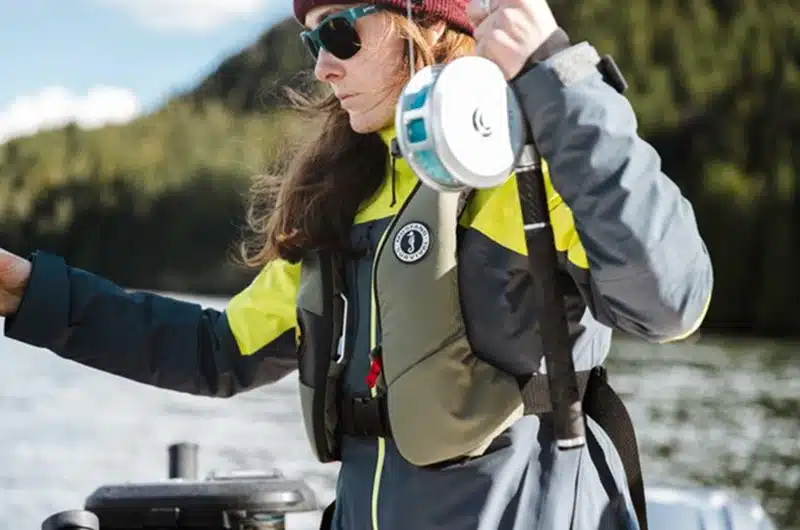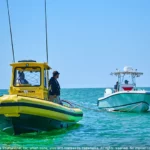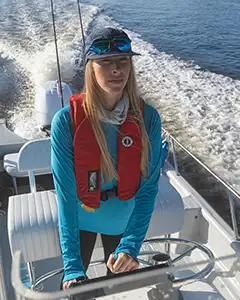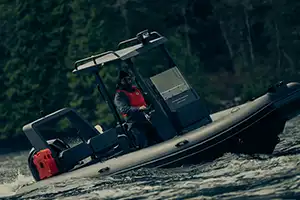
For water sports enthusiasts, nothing beats the thrill of being out on the open water. But having the right gear is critical for safety, comfort, and enjoyment. Whether you’re paddle boarding, kayaking, fishing, or wakeboarding, being equipped with high-quality gear can make all the difference.
Here are four must-have boat essentials designed to elevate your water sports experience. From state-of-the-art personal flotation devices (PFDs) to waterproof storage solutions, we’ve got you covered.
Personal Flotation Devices (PFDs): The Cornerstone of Water Safety
When it comes to water safety, nothing is more essential than a reliable personal flotation device (commonly used interchangeably with life jacket, but not the same thing). These life-saving devices are designed to provide buoyancy and keep your head above water, giving you the best chance of survival in an emergency. There are several different types of PFDs, each tailored for specific water conditions and activities.
Before PFDs were categorized into levels, explained here, they were categorized into types. Type I life jackets are built for rough water and remote areas, offering the highest level of buoyancy, typically around 22 pounds. They are designed to turn most unconscious wearers face up, which is crucial for extended survival and rescue in open or offshore waters.
On the other hand, Type IV throwable devices are meant for calm inland water and are not worn, but rather thrown to a person in distress. These are ideal for quick rescue situations where someone needs immediate flotation support.
Type III life jackets are a popular choice for water sports enthusiasts, as they are designed for comfort and mobility during activities like kayaking, paddle boarding, and wakeboarding. While they may not turn an unconscious person face up, their lightweight design makes them easy to wear for extended periods.
As mentioned, “Types” are now the legacy system and PFDs are now categorized by “Levels.” Aside from “levels” or “types,” there are several types of PFDs, each built for specific uses:
- Foam PFDs – great for anglers and paddlers — designed for all-day comfort with features like large armholes and adjustable straps.
- Inflatable PFDs – perfect for boaters and fishers wanting low-bulk performance — offer sleek, compact protection that activates automatically on immersion.
- Hybrid PFDs – adaptable safety in changing conditions, with a combination of foam and CO₂-inflated buoyancy.
Moreover, when choosing a PFD, consider the type of water you’ll be in, the features you need, and the size that fits you best. A properly fitted life jacket can make all the difference, keeping you afloat and increasing your chances of rescue.
Dry Bags and Waterproof Storage: Protecting Your Essentials
Keeping your gear dry is a top priority when you’re out on the water, especially in rough conditions. Dry bags and waterproof storage solutions are designed to safeguard your essentials, like electronics, clothing, and snacks, no matter how wet things get. The right dry bag can make the difference between a great day on the water and a soggy disaster.
When shopping for a dry bag, pay attention to features such as durability, waterproof materials (like heavy-duty nylon or PVC), reinforced seams, and secure roll-top closures. Straps are another important feature, allowing you to easily carry your bag or secure it to your boat or personal watercraft.
Technical Marine Apparel: Enhancing Comfort and Protection
Your gear should work with your environment, not against it. That’s why technical marine apparel is a must. Think breathable, quick-drying, and look for sun-protective fabrics when possible, also reinforced seams, articulated pattering, and moisture-wicking materials designed to move with you. A sailor facing wind and waves might prefer a waterproof shell, while a paddleboarder may want a lightweight, ventilated top.
Pro tip: Don’t forget about gloves. A well-fitted pair enhances grip, reduces blisters, and protects your hands from harsh conditions. Choose gloves with padded palms, quick-drying materials, and wrist support tailored to your sport. And don’t forget to dress in layers.
Boat Towing membership
 No one plans to get stuck on the water—but it happens. Whether you run out of fuel or suffer engine trouble, having a boat towing membership is essential.
No one plans to get stuck on the water—but it happens. Whether you run out of fuel or suffer engine trouble, having a boat towing membership is essential.
Sea Tow offers membership that provides on-water assistance services like towing, jump starts, and soft ungroundings. A quick call can turn a stressful moment into a minor inconvenience. Stay prepared, especially if you’re venturing far from shore or into unfamiliar waters.
Other Must-Have Boat Essentials
While the big gear gets the spotlight, a few compact items can make or break your day on the water:
- First Aid Kit: Stock essentials like antiseptic, bandages, and allergy medication.
- Navigation Tools: A GPS, compass, or even a waterproof map is helpful in low visibility.
- Extra Layers: Weather can change quickly. Bring warm, dry clothing in a waterproof bag.
- Tow Ropes: Always good to have for safety or towing gear.
- Communication Device: Carry a waterproof phone, VHF radio, or emergency beacon.
- Emergency Flares: Always have backup signaling tools in case electronic devices fail.
Quick Tip: Store everything in waterproof containers or compartments to keep them functional and accessible.
Additional Tips
- Familiarize yourself with local boating laws and regulations before heading out on the water.
- Make sure all passengers are wearing properly fitted life jackets at all times.
- Always have a designated sober operator when operating a boat.
- Stay alert and aware of your surroundings while on the water.
- Check all safety equipment regularly to ensure it is functioning properly.
- Avoid boating alone whenever possible. It’s always safer to have someone else on board in case of an emergency.
- Be aware of weather conditions and always check the forecast before heading out.
- Take a boating safety course to learn proper navigation, emergency procedures, and other important skills.


